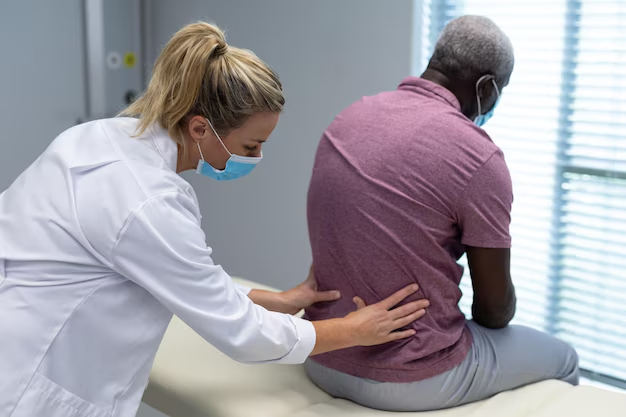Understanding Scoliosis: Do You Have It and What You Need to Know
Have you ever noticed an odd curve or tilt in your spine or seen shoulders that are not quite even? While these might seem like small quirks, they could be signs of a condition called scoliosis. Scoliosis is more common than you might think, affecting millions of people worldwide. But how do you know if you have scoliosis? Let’s explore the signs, symptoms, causes, and what you can do about it.
What Is Scoliosis?
Scoliosis is a medical condition where a person's spine has a sideways curve, typically shaped like an "S" or "C" when viewed from the back. Scoliosis can occur at any age but is most commonly detected during the growth spurt just before puberty.
Types of Scoliosis
- Idiopathic Scoliosis: The most common type, which has no specific identifiable cause.
- Congenital Scoliosis: Occurs due to a malformation of the spine present at birth.
- Neuromuscular Scoliosis: Associated with neurological conditions such as cerebral palsy or muscular dystrophy.
- Degenerative Scoliosis: Occurs in older adults due to the wear and tear of the spine.
Recognizing the Signs and Symptoms
Recognizing scoliosis can be tricky, especially if you are not familiar with what to look for. Here are some key indicators:
- Uneven Shoulders: One shoulder blade may appear more prominent.
- Asymmetrical Waist: Differently shaped sides of the waist or hips.
- Shifted Trunk: An uneven body line or the head appearing off-center compared to the pelvis.
- Clothing Issues: Clothes may hang unevenly or not fit properly.
- Back Pain: Though not always present, it can occur, especially in adults.
Self-Check: How to Spot Scoliosis
You can perform a simple self-assessment or have someone help you:
- Stand Straight: With feet shoulder-width apart, check for unequal height in shoulders or hips.
- Bend Forward Test: Bend forward at the waist. Notice any rib prominence or curvature.
Causes and Risk Factors
The specific cause of scoliosis often remains unknown, particularly in idiopathic cases. However, several risk factors can predispose an individual to scoliosis:
- Genetics: Family history plays a significant role. If a family member has scoliosis, there's a higher chance you might too.
- Age: Signs typically appear during growth spurts in children.
- Sex: Although both genders can get scoliosis, females are more likely to develop severe curvature.
Diagnosing Scoliosis
If you suspect scoliosis, the next logical step is getting a professional diagnosis. Here is what the process typically involves:
Medical Examination
A healthcare provider will perform a comprehensive physical exam, reviewing medical history and conducting a physical assessment of the spine.
Imaging Tests
- X-rays: The most common and effective method for diagnosing the degree of curvature.
- MRI and CT scans: Used to assess detailed cross-sections of the spine and adjacent structures if needed.
Living with Scoliosis
Discovering that you have scoliosis can feel overwhelming, but remember that you are not alone. Here’s how you can manage it effectively:
Monitoring and Observation
For minor curves, regular monitoring and check-ups might be all that's needed to watch for changes or progression.
Bracing
For growing adolescents, wearing a brace might prevent further curvature. Braces come in different designs and are custom-fitted to each person.
Physical Therapy and Exercises
- Core Strengthening: Exercises that enhance core strength can support the spine more effectively.
- Stretching: Helps maintain flexibility and minimize discomfort.
Surgical Options
In severe cases where the curve progresses, surgical intervention may be considered to correct the spine and prevent further complications.
Emotional and Social Considerations
Living with scoliosis goes beyond the physical symptoms; it can impact emotional and social aspects too:
- Mental Health: It’s normal to experience anxiety or self-consciousness. Professional advice and support groups can provide comfort.
- Daily Activities: Recognizing limitations and adapting to them is key, ensuring you maintain a quality of life that suits you.
Communities and Support
Joining scoliosis support groups can offer invaluable emotional support and practical advice from others experiencing the same challenges.
Staying Informed and Up-to-Date
Knowledge is your best tool in managing scoliosis effectively. Stay updated with recent research, potential new treatments, and technological advancements in diagnostics.
Concluding Insights
Scoliosis doesn’t have to define your life. By recognizing the signs early and seeking appropriate medical evaluation, you can take control of your health journey. Whether you're dealing with minor curves or more severe forms, understanding your options and connecting with support networks can empower you to live fully and confidently.
Quick Summary: Scoliosis Essentials
- 👀 Look for Key Signs: Uneven shoulders, hips, or waistlines are telltale indicators.
- 👣 Perform Simple Checks: Use the bend-forward test to notice any irregularities.
- 🧬 Know the Risks: Family history, age, and sex contribute to risk factors.
- 🏥 Seek Professional Diagnosis: Always consult healthcare providers for confirmation.
- 🛠️ Manage with Monitoring, Bracing, and Therapy: Explore non-invasive management possibilities.
- 🤗 Embrace Support Networks: Engage with groups for mental and emotional support.
- 📰 Stay Informed: Keep updated on advancements and new treatments for scoliosis.
